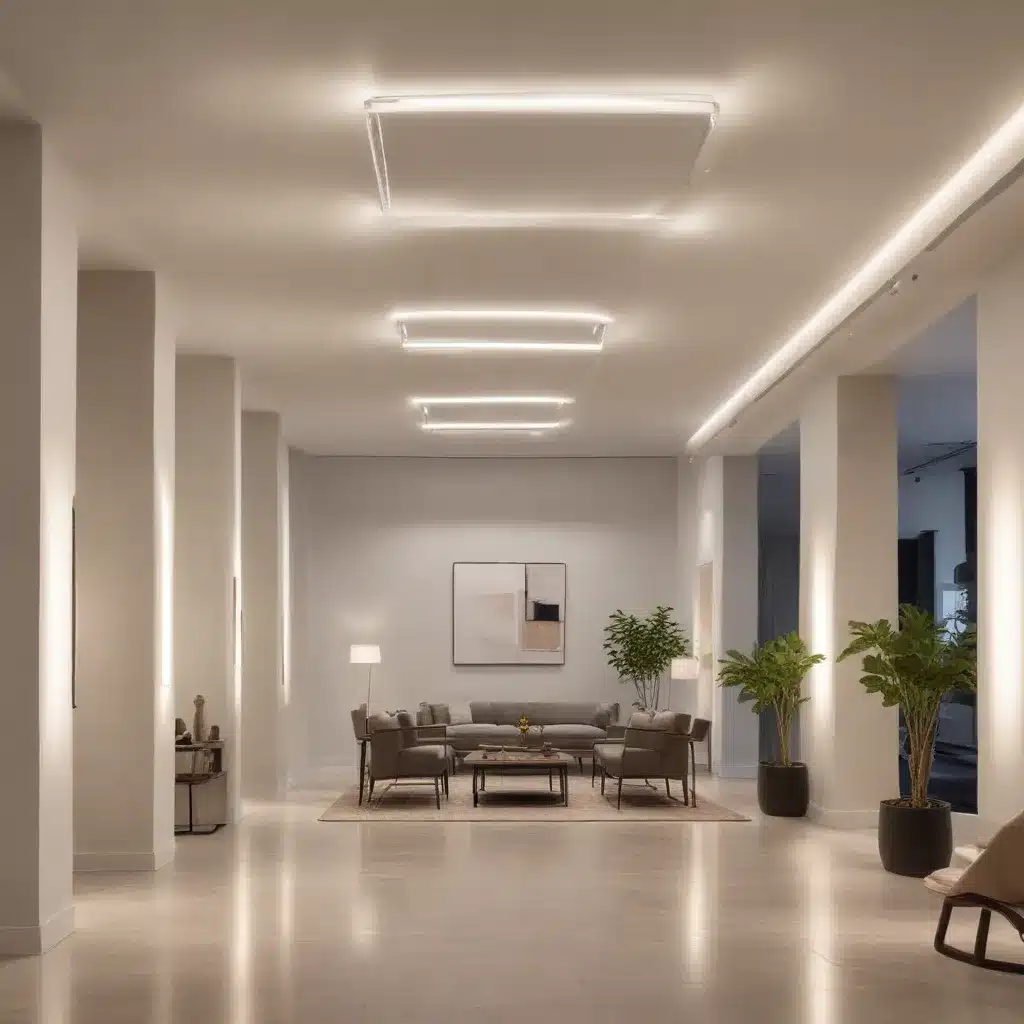
Understanding the Layers of Light
Your home is more than just a physical space – it’s a canvas where every design element, from furniture to finishes, comes together to reflect your unique style and personality. And at the heart of this canvas lies the art of lighting design. Lighting is not merely a functional necessity; it’s a transformative tool that can elevate the ambiance, productivity, and overall aesthetics of your living spaces.
At its core, effective lighting design is about creating a harmonious balance between different layers of illumination. It’s not enough to simply install a few fixtures and call it a day. Instead, mastering the art of layered lighting is the key to achieving spaces that are both visually stunning and perfectly suited to your lifestyle.
Let’s dive into the essential layers of light that every homeowner should understand:
Ambient Lighting
Ambient lighting lays the foundation for your overall illumination, setting the tone and mood of a room. This foundational layer is responsible for providing a warm, uniform glow that envelops the space, ensuring visibility and comfort throughout. Recessed lighting is a popular choice for ambient lighting, seamlessly integrating into ceilings or walls while effectively brightening a room.
Beyond its primary function, ambient lighting can also be strategically directed to accentuate specific architectural details or artwork, adding depth and visual interest to your spaces. By carefully considering the placement and intensity of your ambient lights, you can create an inviting atmosphere that welcomes relaxation and ease.
Task Lighting
While ambient lighting sets the stage, task lighting is the star of the show when it comes to functionality. This layer of illumination focuses on specific areas where tasks are performed, such as cooking, reading, or working. Under-cabinet lights, pendant lamps, and adjustable desk lamps are all examples of task lighting, providing the right amount of light precisely where you need it.
Incorporating task lighting not only enhances the practicality of your spaces but also helps to reduce eye strain and improve productivity. By considering factors like color temperature and brightness levels, you can tailor the task lighting to your specific needs and create an environment that supports your daily activities.
Decorative Lighting
Decorative lighting is the jewelry of your home, adding a touch of elegance and personality to your spaces. This layer includes statement pieces like chandeliers, sconces, and lamps that serve as focal points, captivating the eye and setting the mood. While decorative lighting should complement, not replace, the practical light layers, it plays a crucial role in shaping the overall aesthetic of a room.
When selecting decorative lighting, it’s important to strike a balance between form and function. Ensure that these statement pieces not only enhance the visual appeal of your spaces but also provide sufficient illumination to support your daily needs.
Accent Lighting
Accent lighting is the final piece of the puzzle, adding depth, drama, and visual interest to your home. This layer is responsible for highlighting specific architectural features, artwork, or other design elements, creating a sense of depth and drawing the eye to these captivating focal points.
Whether you choose to use track lighting, wall-mounted fixtures, or recessed spotlights, accent lighting plays a pivotal role in elevating the aesthetic of your spaces. By strategically placing these lights, you can create a sense of drama and intrigue, making your home a true work of art.
Mastering the Art of Layered Lighting
To achieve the perfect lighting design in each room of your home, it’s recommended to have multiple light sources, ideally between 2 and 5 per space. This allows you to create different moods and ambiances, tailoring the lighting to the specific needs and activities of the room.
Imagine managing all these layers of light seamlessly through a smart control system. With the press of a button, you can adjust the lighting to set the mood for a romantic dinner, a lively party, or a calm evening at home. Advanced systems can even memorize your preferences for different occasions, simplifying your life and enhancing the overall experience of your living spaces.
The Role of Interior Designers in Lighting Design
Interior designers play a crucial role in the lighting design process, as they understand how illumination can transform a room. At Local Builder London, we work closely with trusted lighting partners to ensure that every project receives the best lighting plan possible, achieving the desired atmosphere and functionality in each space.
By integrating lighting design from the outset of a project, we can create a cohesive, functional, and stunning result that is tailored to our clients’ needs and lifestyle. Our office showroom, upgraded with the latest lighting and control systems, serves as a tangible example of the power of well-designed illumination, showcasing how the different layers of light work together to create a welcoming and inspiring environment.
Embracing the Transformative Power of Lighting
Lighting is not just an afterthought; it’s a central component of design that brings life, beauty, and functionality to every room. By understanding the importance of layered lighting and collaborating with experienced professionals, you can unlock the endless possibilities of your living spaces, creating a home that is not only visually stunning but also perfectly tailored to your unique lifestyle.
Welcome to a brighter, more beautiful home – one that is designed with you and light in mind.


